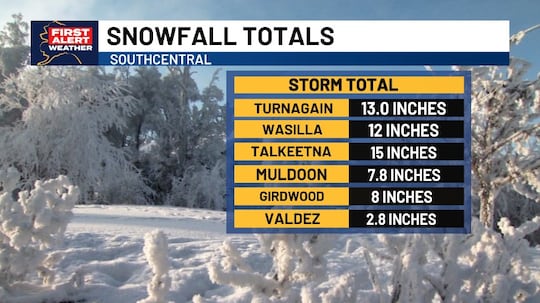In 2022, Alaska became the first state in the country to run a top-four open primary in tandem with an instant runoff general election. Alaska also happens to have the largest proportion of Native peoples in the nation, followed by Oklahoma and New Mexico.
Closed primaries were a system through which political parties could control candidate selection and voter choice in our democratic elections. Consider a party primary much like having to win a high school basketball regional tournament in order to qualify to compete for the State title, but where only superfans or parents of the players are allowed to choose the teams.
Many commentators have speculated about the impact of the new open primary system on rural and Alaska Native voters. We set out to analyze the results of that first open primary election in 2022, to let the facts speak for themselves.
There is no way to access records of individual Alaska Native voting behavior at the statewide level. But because there is a distinct group of predominantly Alaska Native communities in rural Alaska, we were able to compare the voter behavior in these communities to voter behavior in communities across the rest of the state. You can see our full report here.
Alaska’s primary elections are typically held during the waning days of summer, a valuable time for Alaska Natives who are hunting, fishing, and gathering their traditional foods before the winter. Extreme geography and adverse weather conditions often hobble precinct operations dependent upon a successful coordination between the Alaska Division of Elections, the U.S. Postal Service, air carriers that carry election equipment, and each precinct’s volunteer voting officials.
The already exciting 2022 open primary was made even more exciting by the special election an essential part of the new election law of 2020, and with an emergent election added to the calendar after the death of a larger-than-life Congressman Don Young in the middle of his term, After the dust settled, Alaskans had 48 different choices in the special election, including many well-known candidates.
Despite challenges with the vote-by-mail format introduced by the special election —with some rural districts posting a 16% rejection rate, four times that of the statewide average— two Alaska Natives nevertheless ranked in the top 5 vote getters! Rural voters then prepared for their first open primary and their first experience of ranked choice voting in the special general election.
We found that voters in predominantly Alaska Native communities were far more likely to vote for a slate of candidates in the open primary that would not have been possible under the previous, partisan system. This means that voters in Alaska Native communities were more likely than the average voter to support a combination of Republicans along with Independents, Democrats, and/or third-party candidates. It is an obvious difference. Voters across the rest of the state “crossover” voted at a rate of 47.4% in the 2022 primary, while voters in predominantly Alaska Native communities “crossover” voted at an astounding rate of 79.9%. This suggests that Alaska Native voters are especially well served by the open primary system.
Our analysis also confirmed what has already been well-established: that there are significant and long-standing obstacles to voter education and voter participation that are unique to rural Alaska and many of these predominantly Alaska Native communities. Language barriers, lack of poll workers and post office staffing in rural villages, the gap between rural priorities and the urban political power centers — all of these things can and have made it harder for rural and Alaska Native people to participate in the process.
However, we found no evidence to suggest that reform is adding to these challenges, and much to indicate that it is not a contributing factor. Primary election turnout actually increased in predominantly Alaska Native communities from 2020 to 2022, correlating with the transition to the open primary. If someone tells you that the new election system discouraged Alaska Native voters from participating, they are likely not looking at the data, nor at history.
Rural priorities are not always best reflected by one party or the other. That’s one reason why Alaska Natives living in rural parts of the state may consistently choose to vote across party lines. It’s why election turnout in predominantly Alaska Native communities surged to incredible levels, at a rate of 70.6 percent when subsistence was on the ballot in 1982.
High turnout in rural Alaska during the subsistence fights of the 1980s and early 90s proves that low turnout in predominantly Alaska Native communities is not inevitable. But if we want to see increased voter participation from Alaska Native people, we need systems and choices that reflect our values and priorities. The open primary and ranked choice voting system seems like it may bring us one step closer to that future.
Going forward, we hope that Alaskans will continue to study and learn about these trends across multiple election cycles in Alaska under this new, open-primary system, including in predominantly Alaska Native communities. Most importantly, when it comes to understanding the impact of opening our elections, we hope that Alaskans will continue to rely on the guidance and expertise of the Alaska Native people who live in and represent these communities, in the same way they’ve successfully stewarded our lands for thousands of years.
Michelle (Macuar) Sparck is the director of Get Out the Native Vote (GOTNV), a statewide nonprofit voter education organization based out of Anchorage under the Cook Inlet Tribal Council. Macuar, a member of the Qissunamiut Tribe of Chevak who grew up in Bethel, went on to become an experienced legislative aide in Washington, D.C. and Juneau.
The views expressed here are the writer’s and are not necessarily endorsed by the Anchorage Daily News, which welcomes a broad range of viewpoints. To submit a piece for consideration, email commentary(at)adn.com. Send submissions shorter than 200 words to letters@adn.com or click here to submit via any web browser. Read our full guidelines for letters and commentaries here.

:quality(70)/cloudfront-us-east-1.images.arcpublishing.com/adn/6IJUMC2HMZBUNDOUIAU3W6DBQ4.JPG?ssl=1)
:quality(70)/cloudfront-us-east-1.images.arcpublishing.com/adn/6IJUMC2HMZBUNDOUIAU3W6DBQ4.JPG?w=400&resize=400,240&ssl=1)
:quality(70)/cloudfront-us-east-1.images.arcpublishing.com/adn/6IJUMC2HMZBUNDOUIAU3W6DBQ4.JPG?w=80&resize=80,80&ssl=1)





























